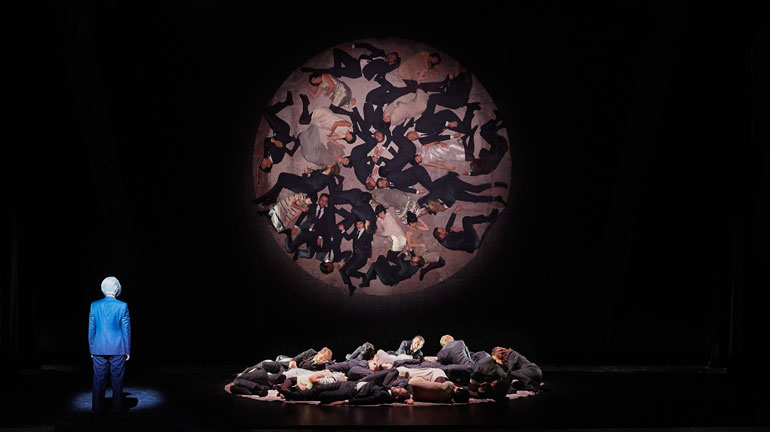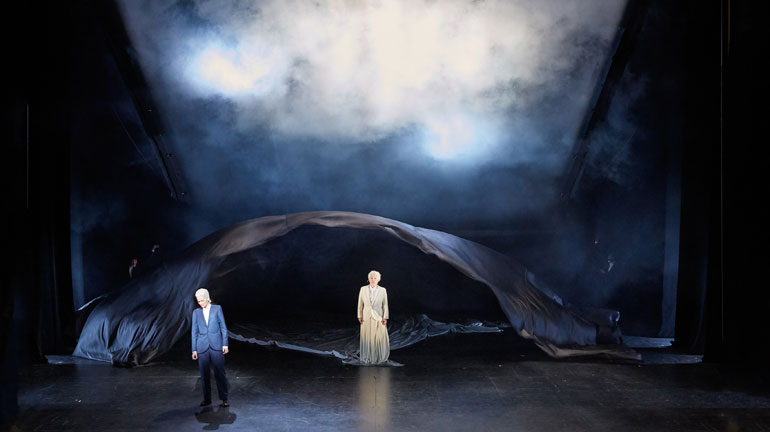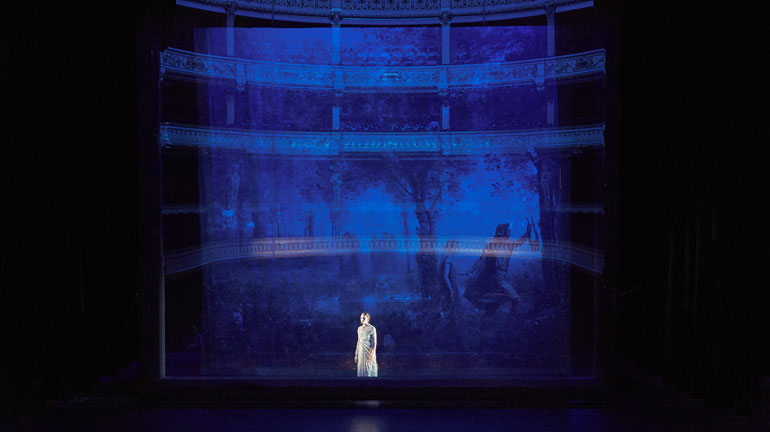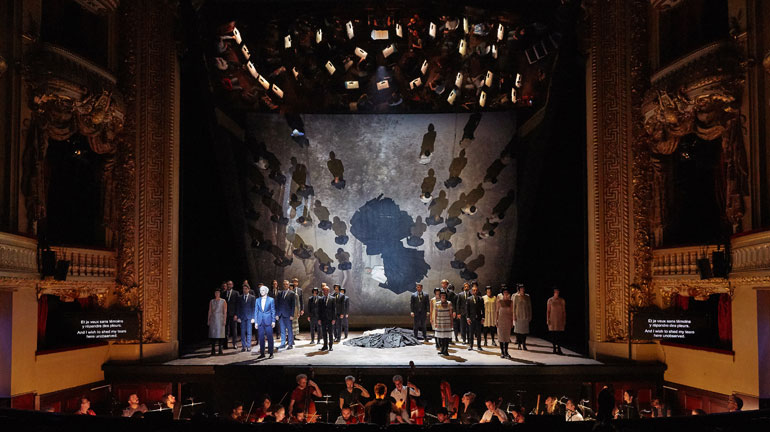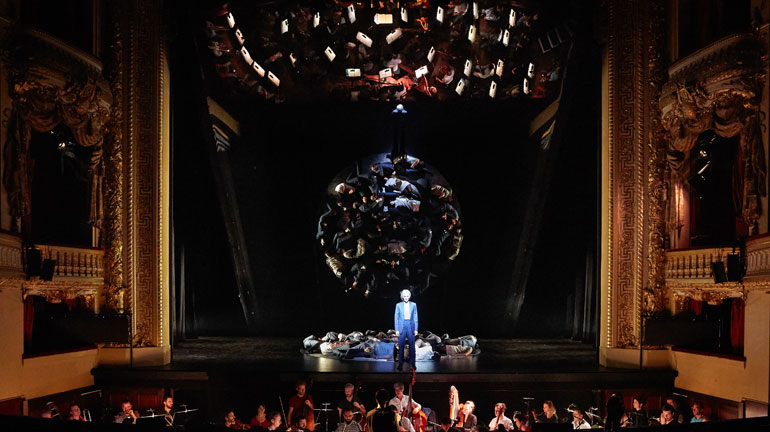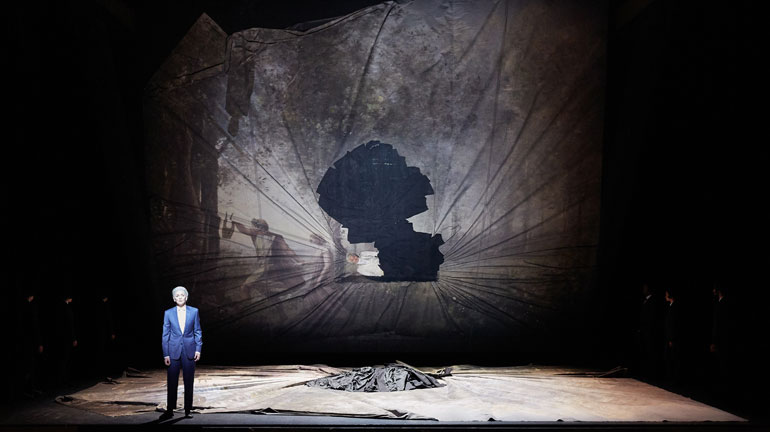de page
Orfeo and Euridice
AN OPERA IN FOUR ACTS
FRENCH LIBRETTO BY PIERRE-LOUIS MOLINE REARRANGED VERSION BY HECTOR BERLIOZ
What forms the basis of the myth of Orpheus? What makes it beautiful, terrible and sad? And what continues to haunt us even now as we follow him on his journey? It has to be the fact Orpheus turns around. Orpheus could not help but turn around. Without turning around, the myth wouldn’t exist. Orpheus the musician, whose desperate plea enchants the gods, realises his destiny. His destiny is not to be the one who brings Eurydice back but rather to be the one who sings a powerful song of loss.
I undertake my work in the theatre like a spatial work of art. So, I imagined that since Orpheus turns around, so too should the entire space on stage. To create this effect, I chose a kind of theatre magic process developed in the 19th century called Pepper’s Ghost, that allows apparitions to appear through reflections. I use this process, while leaving the mechanism perfectly visible, to reverse the dimensions of the stage and transform the vertical through the depth of the theatre. This made it possible to have a hole appear on stage that represents the absence of the loved one, death, or that archetypical space of an artist who must look into the depths. In the space created by the hole we see the separation between the world of the living and that of the dead, where the illusion of a possible return disappears. On the Elysian Fields, in the Greek afterlife, where Orpheus goes to look for Eurydice, the effect of the song and the strength of his love is only ephemeral which is very similar to the theatre.
Stage direction and set design
The only decoration on stage is a painting by Jean Baptiste Corot, Orpheus Leading Eurydice from the Underworld. The painting is present here from various angles and in different sizes that can be turned and superimposed thanks to the staging. Orphyeus and Eurydice by Christoph Wilibald Gluck is considered as a transition piece between the Baroque and the Classic periods. It is also a work that has been handed down over time: Hector Berlioz created a prodigious version of it a century later, which Raphaël Pichon in turn chose to pass on through the Opera Comique. Jean-Baptiste Corot produced his painting in 1861 just after Berlioz’s rearrangement was performed in Paris, and it is very likely that he was inspired by it. His painting is itself considered as a transtion piece, with a movement towards impressionism that can be seen in the dappled light, streaming through the trees in the forest of Eurydice. I wanted to tackle the staging in an impressionist way, where the interaction between light and dark come together with the vibrations inherent in the music and the song of Orpheus.
In this version Orpheus is played by a woman. The story of love between Orpheus and Eurydice suggests a twin-like relationship, making us think of the speech by Aristophanes on the androgynous man cut in two. With the three female leads, the stage is exclusively female, embodying both a place of love and that of art.
Aurélien Bory
Juin 2018
The mirrors are the doors through which the dead come and go.
Jean Cocteau
Her death fills him to the brim.
Rainer Maria Rilke
CASTING
Conductor Raphaël Pichon
Stage direction and set design Aurélien Bory
Dramaturge Taïcyr Fadel
Set designer Pierre Dequivre
Costume designer Manuela Agnesini
Lighting designer Arno Veyrat
Orfeo Marianne Crebassa
Euridice Hélène Guilmette
Amore Léa Desandre
Chorus et orchestra Ensemble Pygmalion
Production Opera Comique
Coproduction Opera of Lausanne, Royal Opera of Wallonie, Theater of Caen, Theaters of the city of Luxembourg, Royal Opera of Versailles, Beijing Festival
Created the 19th of November 1859 at the Théâtre-Lyrique.



